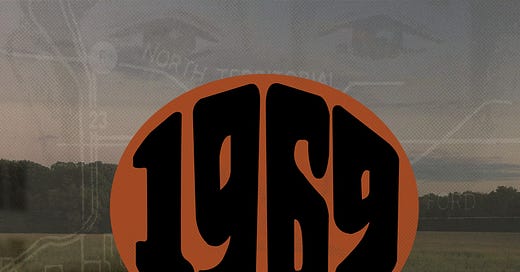Indy Film Fest -- 1969: Killers, Freaks, and Radicals
Andrew Templeton's exhaustive and impressive documentary looks at an infamous series of murders that may have not gotten a full resolution due to the turbulence of the times.
For Indy Film Fest tickets and showtimes, click here.
“1969: Killers, Freaks, and Radicals” is director Andrew Templeton's exhaustive and impressive documentary look at an infamous series of murders of women in Michigan during the late 1960s. John Norman Collins was caught and sent to prison, where he remains to this day — but Templeton’s journalistic inquiry suggests he may have not been the only one involved.
You may have not heard of the “Michigan Murders,” committed largely in Washtenaw County, despite being front-page news across the country at the time. That’s because the case was closed with the arrest of Collins — a tall, good-looking college student who preyed on fellow students and teens as young as 13 while leading a seemingly normal life including as an active member of the fraternity community.
Multiple witnesses on numerous occasions, along with physical evidence, strongly suggested Collins did not work alone. He was spotted picking up women in his car along with one or two other men, friends and roommates who testified against him in court but were never charged themselves.
Through archival footage and a huge array of interviews conducted over several years from many of the principles involved in the case — several of whom has since passed — Templeton suggests the turbulence of the era lead to a fractured law enforcement response to the case. Multiple jurisdictions were involved depending on where the bodies were found, and Michigan universities were the epicenter of student unrest against the Vietnam War.
Extensive testimony from Doug Harvey, the pugilistic sheriff of Washtenaw at the time, show his energy was focused on putting down student uprisings more than anything else. Several of the student activists at the time appear to express their loathing of his heavy-handed, often violent tactics.
There was also another issue: just a few days after Collins’ arrest, the Charlie Manson murders happened. It instantly became the story of the age, and attention for other notorious crimes was by default shunted into the background.
With the recent rise of interest in “cold cases” and true crime podcasts, Templeton threw his energy into investigating this case from his own backyard. It involved many Freedom of Information Act requests, hunting down documents and news reportage, and finding people and getting them to talk.
He even reached out to Collins himself, who refused to appear on camera but exchanged many substantive letters with the filmmaker — at least a few of which obliquely support the contention that he had accomplices.
Templeton also, as the title implies, presents a vivid backdrop of the times and culture against which these murders and their investigation took place. It’s revealing to think in our own currently divisive, fractured time about the fact that political violence was much more commonplace during this era. Protesters injured police with thrown bottles and such, who often responded over the top with the cracking of heads.
It was also an era when women were much more reluctant to report sexual assault. We hear heartbreaking testimony from people who knew Collins and his reputation of aggressively pursuing females, and wish they’d done more. But back then, as they explain, it was seen as the woman’s fault to some extent for putting herself in a position to be targeted for rape.
We hear the sickening details of the torture the victims endured — faces stabbed multiple times, bodies mutilated, all of them sexually assaulted before being disposed of in the woods around Ann Arbor. In many cases, it’s clear Collins (and/or his fellow assailants) actually returned to the scene to move the bodies closer to roads or trails to ensure they would be found.
Their sadism extended to not just the unfortunate women they encountered, but stoking a cloud of fear over the whole community.
One woman, who provides only a voice and first name, Doreen, actually was picked up by Collins and taken to a home where he tried to lure her into the basement. She wisely refused, and was haunted for the rest of her life when she eventually found out several of the murders had taken place there.
Ironically, this home was that of Collins’ uncle, a state police officer. Collins was known to low enforcement as a low-level criminal, mostly stealing and stripping motorcycles to fix rides for his fraternity brothers. But his moving in the same circles as cops and other “good men” helped shield him from more serious scrutiny.
“1969” is the story of not just a man who committed heinous crimes, but also the other men who probably helped him, possibly even participating in the kidnapping and harming of women. But it’s the rich backstory that really puts this documentary over the top, an exploration of a time and place that — like many others — causes people to look past unspeakable acts.





